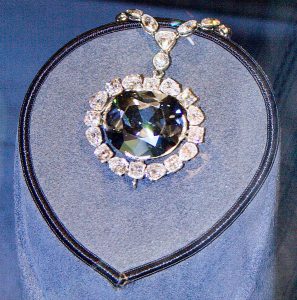
My last post refined the generation of random gems, introducing variance to the size and quality of the stones. One of the first comments I got regarding the post suggested ‘uncut’ as one of the low-quality entries. I hadn’t previously considered gem cutting because I was focusing on the end result, but I do have some ideas on it.
In the Pathfinder Roleplaying Game, when randomly generating gems they suggest having odd-numbered rolls indicate a raw or uncut stone that is half the value of the final cut version. With a successful Craft check, DC increasing with base stone value from 10 to 25, the stone takes on its full finished value. As shown in yesterday’s post, a -5 quality modifier to the base value halves the value of the stone (ignoring size considerations).
Here are some things I want to consider:
- A rough, uncut stone has a quality modifier of -5. This halves the value of a medium stone.
- Cutting something makes it smaller (or rather makes more pieces of it; I’m going to say the other bits are valueless for my purpose). Cutting a stone can make it smaller, but this makes it easier to improve the quality of what remains.
- A rough stone will be easier to improve than a well-cut stone.
As a first pass, perhaps something like the following:
- Craft DC to improve a stone is 10 + 2 per target grade up to average, +4 per grade above average. This means taking a normal uncut stone to average quality is a DC 20 check, but taking it to flawless (quality +4) is DC 36.
- When cutting the stone, each step you reduce the size gives a +2 bonus to the check. Given the abstract nature of the system, I’m willing to say you don’t have to reduce the size.
- Failure by 5 or more damages the stone, reducing its quality by 1d4. However, you normally can Take 10.
- Probably needs to be done trained.
Taking a normal uncut medium opal (100 base value, -5 quality modifier = 50 gp current value) and cutting it (they’re usually polished, actually, but faceted opals do exist… don’t look as nice, IMO) to bring it to average quality has a DC of 20 (10 + 5 steps improvement). DC 20 checks can be made by first-level characters Taking 10 if they are focused on it (good ability score, Skill Focus, and masterwork tools — and a gemcutter should be able to afford masterwork tools). Someone a little bit better (+12 total modifier) and willing to reduce the stone’s size a bit (one step) could reliably take it to good (+1) quality but a small size (-1) — same net value, but a nicer gem. This person could try to do the same without reducing the size but would need to make a check (+12 modifier but DC 24; must roll in order to succeed) and can increase the value of the gem… but runs a chance of damaging it.
If the stone starts at average quality and the gemcutter aims to improve it, the DC… is the same, actually. A more skilled crafter might take a gem that has already been cut and improve it, but under normal circumstances a single gemcutter probably wants to take only a single run at it. I’m okay with that.
Improving a Gem
A trained gemcutter can improve a gem’s quality by making a success Craft check (DC = 10 + 2 per target grade up to average, +4 per grade above average). The gemcutter gets a +2 bonus to this roll for each step the gem’s size is reduced. A failure by 5 or more reduces the gem’s quality by 1d4 grades. The gemcutter can Take 10, but cannot Take 20 (unless there are many gems available to work with and the goal is to get one of the target quality).